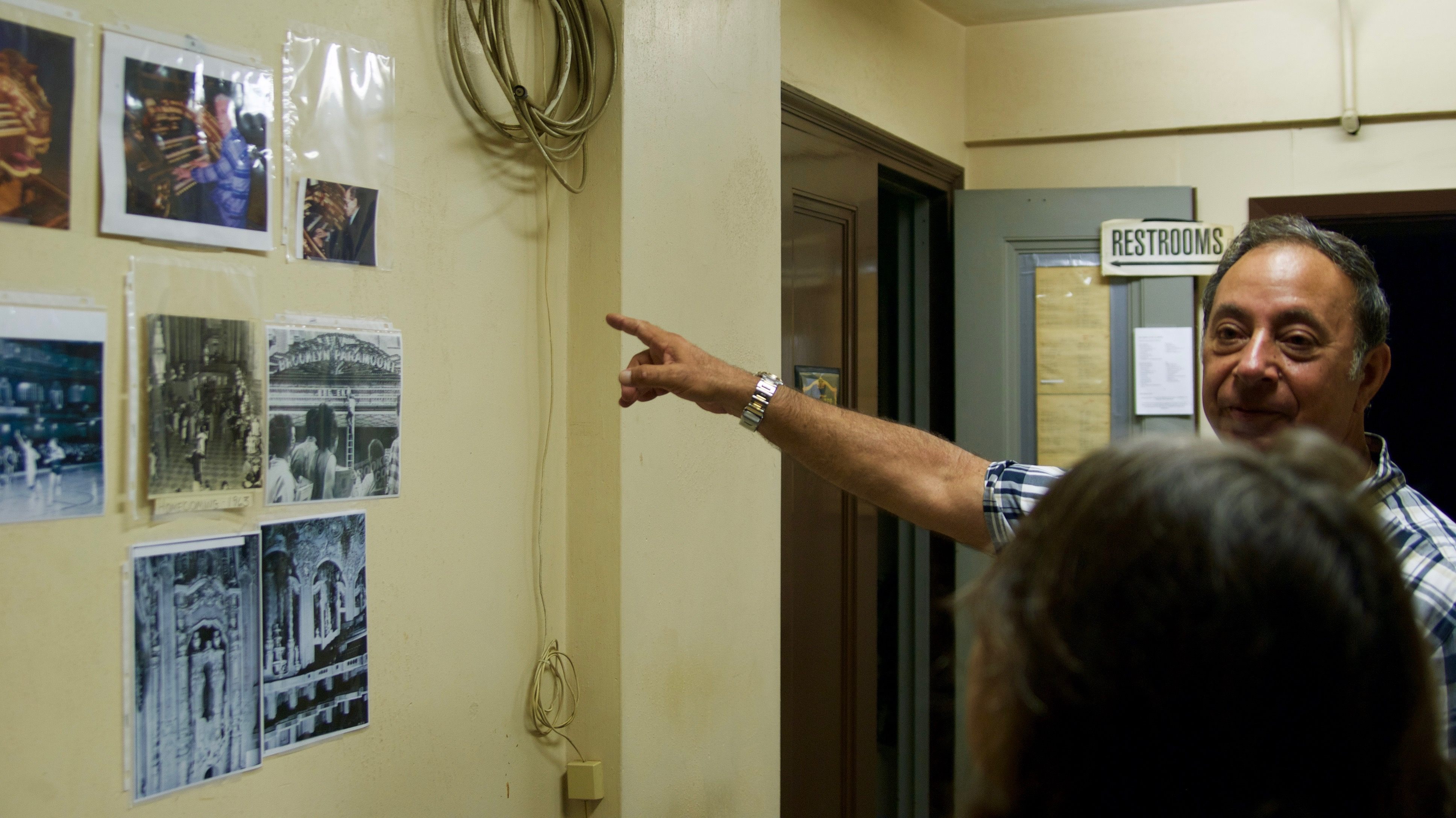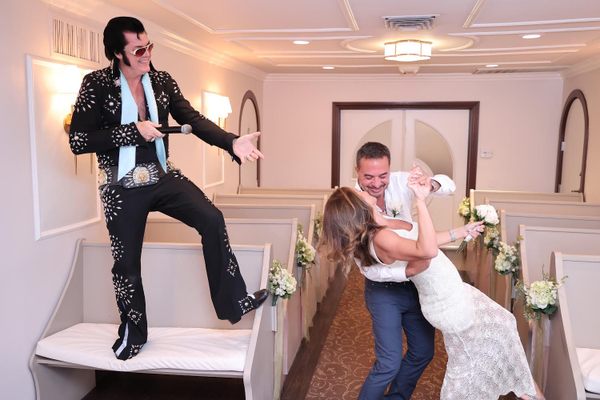In Brooklyn, a Rare Concert Organ Takes a (Hopefully Temporary) Bow
Long Island University’s 1928 Wurlitzer will go quiet for at least the next two years.

It’s hard to say that the Wurlitzer organ currently in residence at Long Island University’s Brooklyn campus is hidden. It’s in plain sight. It’s all around. It’s essentially the entire room we’re standing in—we’re inside of it. Joe Amato, board member of the New York Theatre Organ Society (NYTOS) and curator for this particular organ, points upward, toward the intricately carved ceiling, and waves his hands across the air marking an invisible boundary.
“There’s four chambers to the organ,” he says to a group assembled to tour the organ for the last time for a long while. “The orchestral, the solo, the main, the foundation,” each one hidden behind a curtain.
We’re standing on a basketball court, the bleachers pulled out on one side as if waiting for a crowd to arrive. The organ, or rather the organ’s console, as Amato corrects us, is perched just off-center on the floor. The basketball hoops hang above it. Chairs have been arranged in rows, ready for the next day’s big event. As for the organ, built in 1928 by the Wurlitzer company for what used to be the Paramount Theatre, is getting ready for its last performance for a while. The building is set to undergo renovations over the next two years, and its next life will be much closer to its past as the Paramount, which played host to such legendary acts as Ella Fitzgerald, Jerry Lee Lewis, and Jackie Wilson. When it reopens in late 2019, this space will once again be a full-time performance venue. Although the ultimate fate of the organ isn’t yet completely known, Amato and the NYTOS are hopeful that it will remain in the space as it has for the past 90 years.

Amato’s group has been in charge of this concert organ for about 50 years. The one housed at the university is the only one of its kind left, and one of only two concert organs left in all of New York City. In its day, it was known as a unit orchestra, built to complement silent movies at a time when seeing musicians take a whirl on the “mighty Wurlitzer” was as much of an attraction as the big screen. People crowded in to experience the four-keyboard, multi-switched wonder.
Amato leads us down to the floor. “You see what he’s doing there? He’s tickling the ivories. And [the keys] are ivory,” he tells as we edge in close to the console. “And he’s not really playing the organ,” Amato says, pointing to the man who, to the untrained eye, looks exactly like someone playing an organ. “He’s playing the relay room, which acts like a central processor in a computer. He’s sending signals to the relay room about what he wants to play.” As he plays, the man talks into a walkie-talkie, asking the voice on the other end to tweak this, turn that. It takes at least two people to tune the organ, and in preparation for a concert, Amato and his team have been working for four days on getting the sound just right.
We make our way down to the basement, over the tattered edges of the theater’s original carpet, through a weight room that used to be the green room for the stars of the day, and across the old backstage area to the combination room. This is where all the organ’s sounds are programmed, a complicated mass of diagrams and wires, all set to the musician’s exact specifications. The sounds he’s requested for his upcoming show all need to be programmed here. “It’s like the 1928 version of a computer,” Amato says.
When repairs start on the old Paramount later this year, the console will do what it’s done since 1928, and what it’s done for every basketball game since the court went in in 1963: it will sink into the floor. It sits on an elevator that lowers it to the basement when it’s not in use. The organ’s giant pipes, some as large as 16 feet tall, will be covered during construction. “Dust is a big enemy of pipe organs,” Amato tells us. He leads us back over to the console and sits down, plays us a tune. His whole body moves in rhythm with the music. His feet, hands, head all in constant motion. Playing the organ is a full-body activity.

At one point during the tour, Amato takes us to his office. “My cleaning lady has the day off,” he laughs as he lets us inside. Over his desk is a collection of photographs, news clippings, memories of what the theater used to look like. It’s all about athletics now, with an occasional banquet or college event filling the room with the sounds of people, not music. But you can imagine those intricate, gold carvings speckled with lights, the stone fountains installed near the balconies, water dancing in time with the music, the marble spiral staircases filled with dancers. It’s all history, but a living history. After the theater reopens, Amato and his group hope to get back to doing what they’ve always done, too: keeping that history alive.













Follow us on Twitter to get the latest on the world's hidden wonders.
Like us on Facebook to get the latest on the world's hidden wonders.
Follow us on Twitter Like us on Facebook